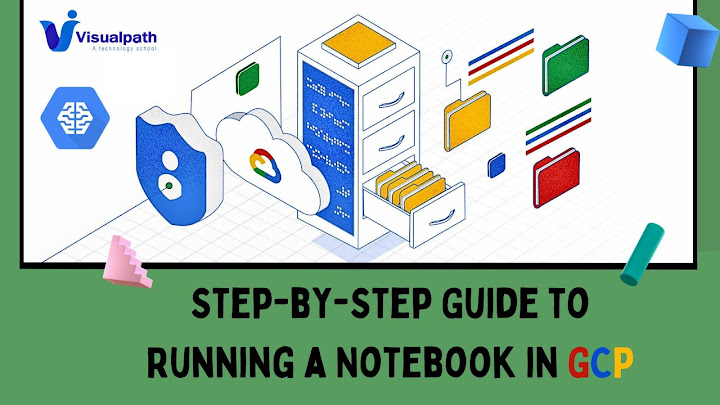Step-by-Step Guide to Running a Notebook in GCP
Running a notebook in Google Cloud Platform (GCP) involves using Google Cloud's AI and Machine Learning tools, particularly Google Colab or AI Platform Notebooks. Here are the key steps and best practices for running a notebook in GCP: GCP Data Engineering Training
Step-by-Step Guide to Running a Notebook in GCP
1. Using Google Colab
Google Colab provides a cloud-based environment for running Jupyter notebooks. It's a great starting point for quick and easy access to a notebook environment without any setup.
· Access Google Colab: Visit Google Colab.
· Create a New Notebook: Click on "File" > "New notebook".
· Connect to a Runtime: Click "Connect" to start a virtual machine (VM) instance with Jupyter.
· Run Code Cells: Enter and run your Python code in the cells.
· Save and Share: Save your notebook to Google Drive and share it with collaborators. GCP Data Engineer Training in Hyderabad
2. Using AI Platform Notebooks
AI Platform Notebooks offer a more robust solution with deeper integration into GCP and additional customization options.
· Set Up AI Platform Notebooks:
1. Go to the AI Platform Notebooks page.
2. Click "New Instance".
3. Choose your preferred environment (e.g., TensorFlow, PyTorch).
4. Configure the instance by selecting machine type, GPU (if needed), and other settings.
5. Click "Create".
· Access the Notebook:
1. Once the instance is ready, click "Open JupyterLab".
2. JupyterLab interface will open where you can create and run notebooks.
· Install Additional Libraries: Use terminal or ! pip install <library> within a notebook cell to install additional Python libraries.
· Save and Manage Notebooks: Notebooks are stored on the instance, but you can also sync them to Google Cloud Storage or Google Drive.
Best Practices (Bisca Points)
1. Environment Management:
o Use Virtual Environments: To avoid conflicts, create virtual environments within your notebook instances.
o Containerization: Use Docker containers for reproducibility and portability.
2. Resource Optimization:
o Autoscaling: Enable autoscaling to optimize resource usage and cost.
o Stop Idle Instances: Set up automatic shutdown for idle instances to save costs.
3. Version Control:
o Git Integration: Use Git to control your notebook version and collaborate with others. Google Cloud Data Engineer Training
o DVC (Data Version Control): Use DVC to manage large datasets and machine learning models.
4. Data Management:
o Google Cloud Storage: Store and access datasets using GCS for scalability and reliability.
o BigQuery: Use BigQuery to analyze large datasets directly within your notebook.
5. Security:
o IAM Roles: Assign appropriate IAM roles to control access to your notebooks and data.
o VPC Service Controls: Use VPC Service Controls to protect data and services.
6. Monitoring and Logging:
o Stackdriver Logging: Integrate with Stackdriver for logging and monitoring notebook activities.
o Alerts: Set up alerts to monitor resource usage and potential issues.
7. Performance Tuning:
o Use GPUs/TPUs: Leverage GPUs or TPUs for computationally intensive tasks.
o Optimized Libraries: Use optimized versions of libraries like TensorFlow or PyTorch.
8. Collaboration:
o Shared Notebooks: Use shared notebooks in Google Colab for real-time collaboration.
o Comments and Reviews: Use comments and version reviews for collaborative development.
By following these steps and best practices, you can effectively run and manage notebooks in GCP, ensuring optimal performance, security, and collaboration. Google Cloud Data Engineer Online Training
Visualpath is the Best Software Online Training Institute in Hyderabad. Avail complete GCP Data Engineering worldwide. You will get the best course at an affordable cost.
Attend Free Demo
Call on - +91-9989971070.
WhatsApp: https://www.whatsapp.com/catalog/919989971070
Blog Visit: https://visualpathblogs.com/
Visit https://visualpath.in/gcp-data-engineering-online-traning.html



Comments
Post a Comment